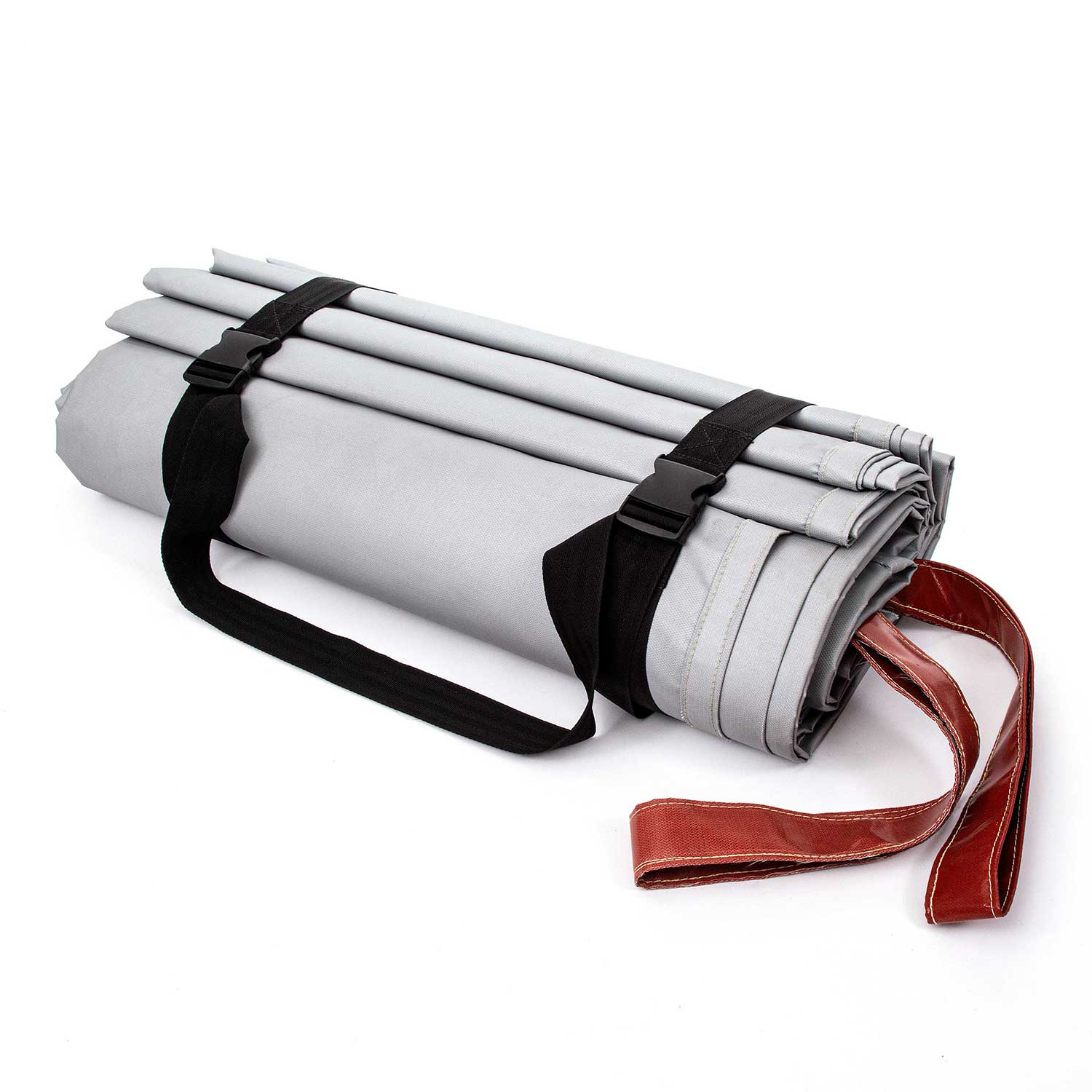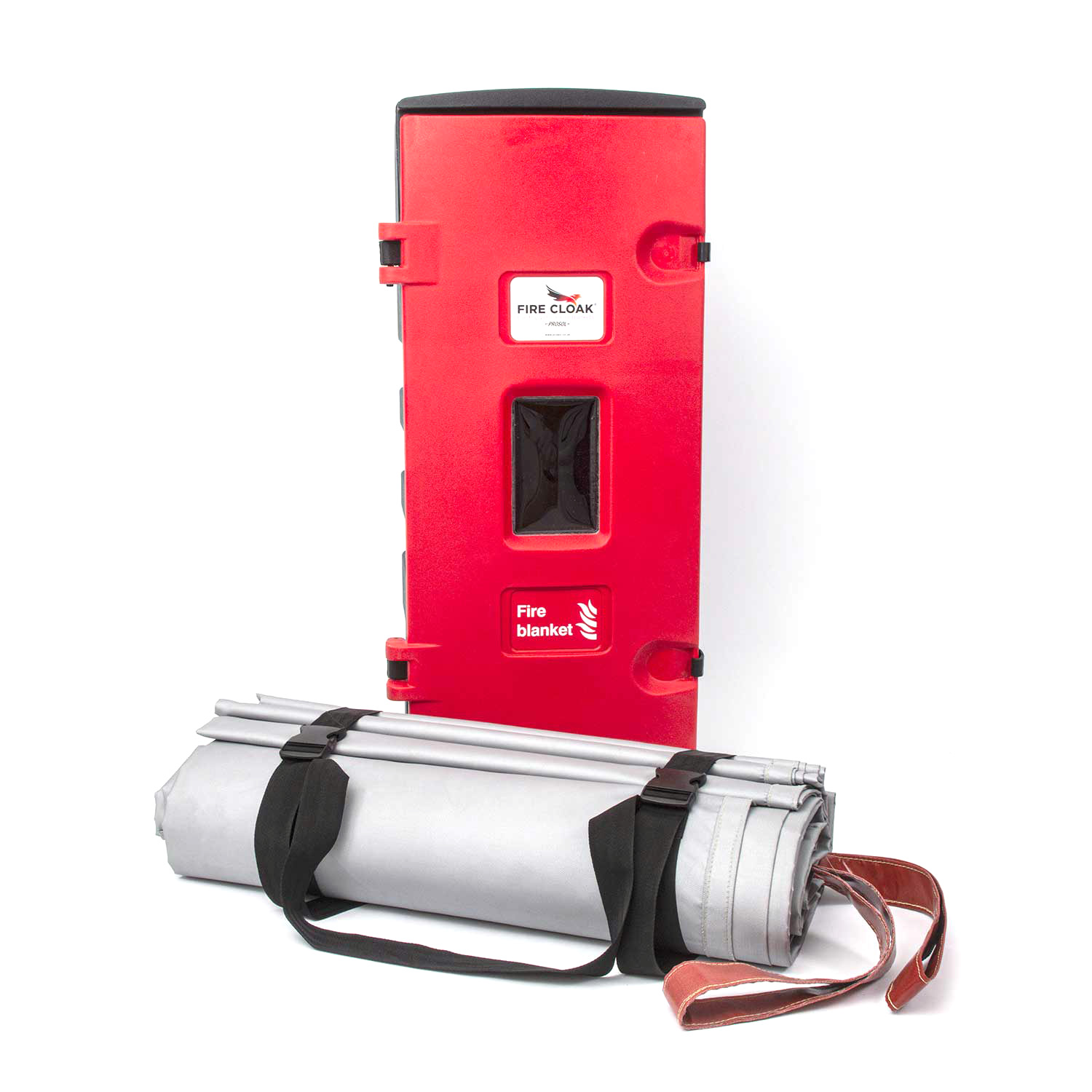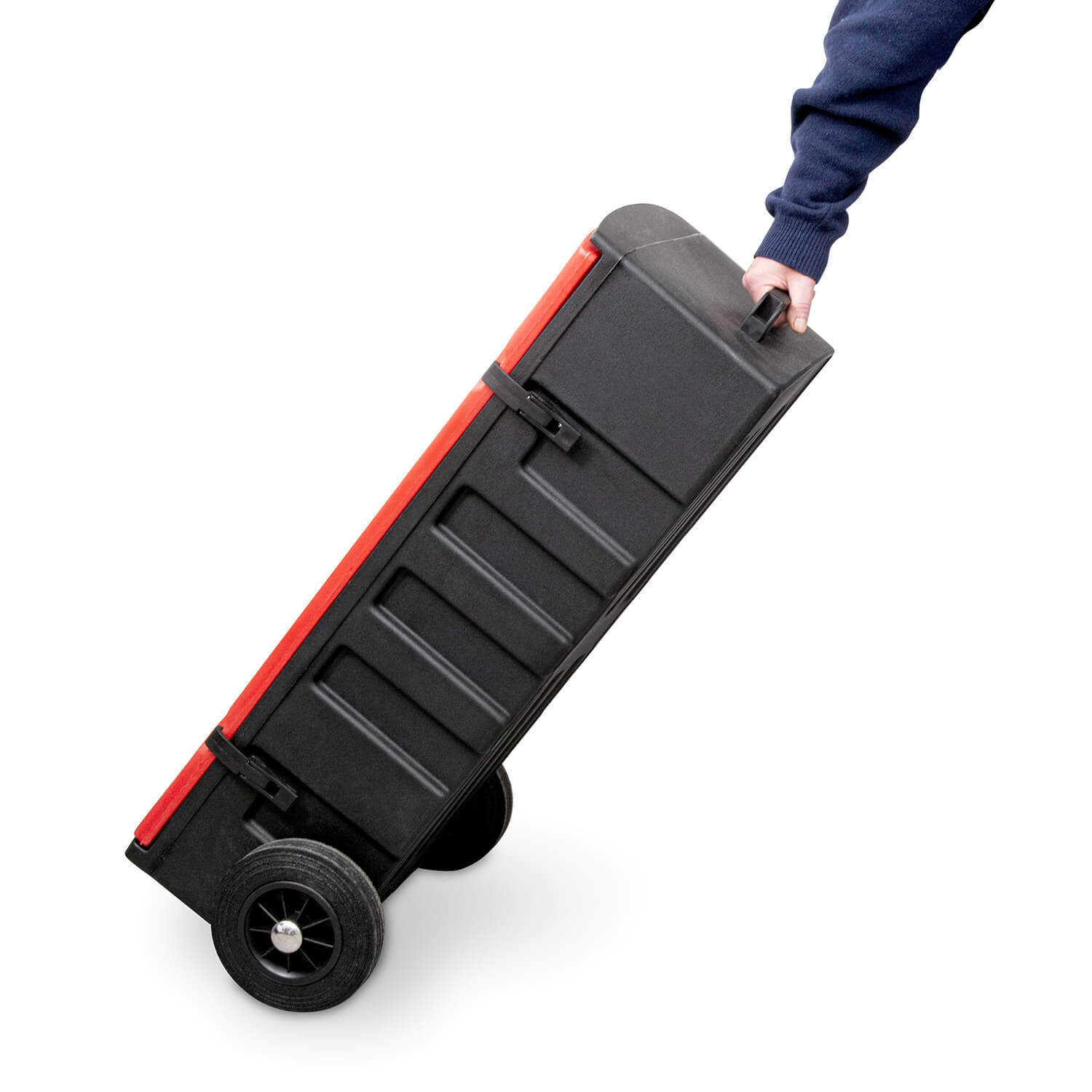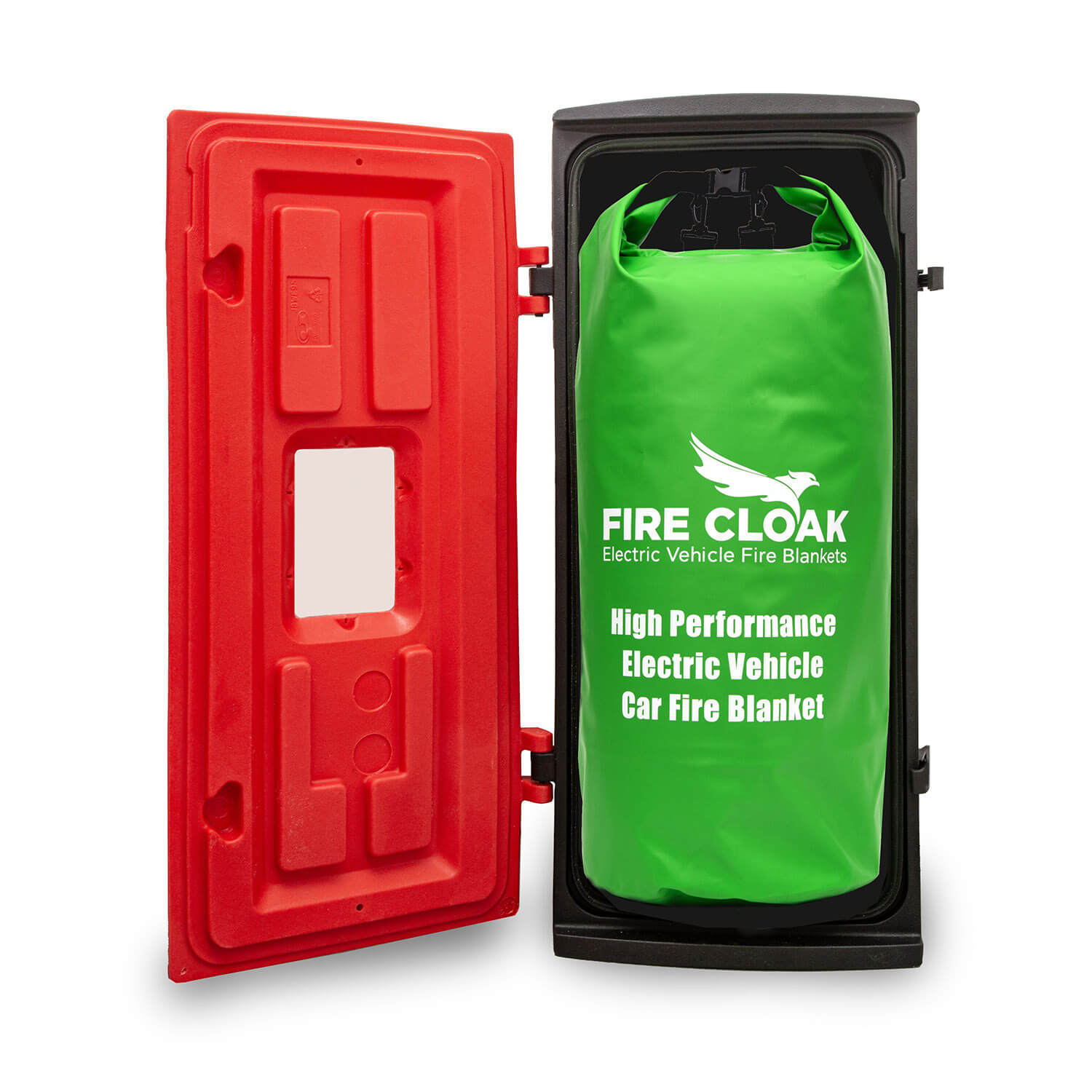Designed to contain Electric and Hybrid Vehicle fires, the EV Car Fire Blanket has been developed after many months of research and development.
The most common form of fire in electric or hybrid vehicles is when the high energy battery is damaged, or a manufacturing fault results in a short circuit. The battery can then go into “Thermal Runaway”, this is a phenomenon where damaged cells heat up rapidly to such an extent that a fire starts. The fire then compromises adjoining cells and a “domino effect” occurs spreading to the whole battery array.
Thermal Runaway fires cannot be extinguished by conventional means!
The electrolyte in a Lithium-Ion battery usually contains hydrocarbon solvents which fuels the fire. If unchecked extremely high temperatures can result.
Utilising an EV Car Fire Blanket minimises the combustion potential by depriving the fire of Oxygen. This inhibits the fire and consequently temperatures drop rapidly, reducing potential damage to surrounding vehicles and property.
The EV Car Fire Blanket can be deployed easily by two people and is supplied in a convenient storage holdall for protection and ease of transport.
Material Description:
Ultra-high Silica content fabric with fire resistant grey silicone coating to both sides. Reinforced corners with heavy duty silicone fabric pull handles. All seams and handles stitched with high temperature resistant thread.
Dimensions: 12 x 9 metres – Weight: 35Kg.
Material Specification
as per BS EN 112127:1998
| Property | Units | Value | Tolerance |
|---|---|---|---|
| Weight | g/m2 | 260gsm | ± 5% |
| Fire Resistant Coating | g/m2 | 30 each side | ± 10% |
| Tensile Strength WARP – ISO 4606:1995 | N/5cm | 1400 N/5cm | – |
| Tensile Strength WEFT – ISO 4606:1995 | N/5cm | 1300 N/5cm | – |
Material Data:
| Standard | Parameter | # of Tests | Continuous | Compliance |
|---|---|---|---|---|
| EN ISO 1716 | Fabric with Coating | Summary | 1.5 MJ/Kg | Compliant |
| EN 13823: 2020 | FIGRA 0.2MJ | 3 | 0 W/s | Compliant |
| EN 13823: 2020 | FIGRA 0.2MJ | 3 | 0 W/s | Compliant |
| EN 13823: 2020 | THR 600S | 3 | 0.0 MJ | Compliant |
| EN 13823: 2020 | LFS | 3 | Nil | Compliant |
| EN 13823: 2020 | SMOGRA | 3 | 19m2s2 | Compliant |
| EN 13823: 2020 | TSP 600s | 3 | 17m2 | Compliant |
| EN 13823: 2020 | Flaming of Fallen Particle Exceeding 10 seconds |
3 | Nil | Compliant |
| BS EN ISO 811: 2018 | Hydrostatic Pressure Test | avg. result | 46cm/H2O (Mbar) | |
| BS EN ISO 9237: 1995 | Air Permeability | avg. result | 0.06mm/sec | |
| BS 7209: 1990 | Water Vapour Permeability | 187.2g/m2. WVPI 22.0% | ||
| BS EN 13501-1:2018 | Reaction to fire classification: A1 |
Designed to contain Electric and Hybrid Vehicle fires, the EV Car Fire Blanket has been developed after many months of research and development.
The most common form of fire in electric or hybrid vehicles is when the high energy battery is damaged, or a manufacturing fault results in a short circuit. The battery can then go into “Thermal Runaway”, this is a phenomenon where damaged cells heat up rapidly to such an extent that a fire starts. The fire then compromises adjoining cells and a “domino effect” occurs spreading to the whole battery array.
Thermal Runaway fires cannot be extinguished by conventional means!
The electrolyte in a Lithium-Ion battery usually contains hydrocarbon solvents which fuels the fire. If unchecked extremely high temperatures exceeding 1,200°C+ can result.
Utilising an EV Car Fire Blanket minimises the combustion potential by depriving the fire of Oxygen. This inhibits the fire and consequently temperatures drop rapidly, reducing potential damage to surrounding vehicles and property.
The EV Car Fire Blanket can be deployed easily by two people and is supplied in a convenient storage holdall for protection and ease of transport.
Material Description:
Ultra-high Silica content fabric with fire resistant grey silicone coating to both sides. Reinforced corners with heavy duty silicone fabric pull handles. All seams and handles stitched with high temperature resistant thread.
Dimensions: 12 x 9 metres – Weight: c.29Kg.
Material Specification
as per BS EN 112127:1998
| Property | Units | Value | Tolerance |
|---|---|---|---|
| Weight | g/m2 | 260gsm | ± 5% |
| Fire Resistant Coating | g/m2 | 30 each side | ± 10% |
| Tensile Strength WARP – ISO 4606:1995 | N/5cm | 1400 N/5cm | – |
| Tensile Strength WEFT – ISO 4606:1995 | N/5cm | 1300 N/5cm | – |
Material Data:
| Standard | Parameter | # of Tests | Continuous | Compliance |
|---|---|---|---|---|
| EN ISO 1716 | Fabric with Coating | Summary | 1.5 MJ/Kg | Compliant |
| EN 13823: 2020 | FIGRA 0.2MJ | 3 | 0 W/s | Compliant |
| EN 13823: 2020 | FIGRA 0.2MJ | 3 | 0 W/s | Compliant |
| EN 13823: 2020 | THR 600S | 3 | 0.0 MJ | Compliant |
| EN 13823: 2020 | LFS | 3 | Nil | Compliant |
| EN 13823: 2020 | SMOGRA | 3 | 19m2s2 | Compliant |
| EN 13823: 2020 | TSP 600s | 3 | 17m2 | Compliant |
| EN 13823: 2020 | Flaming of Fallen Particle Exceeding 10 seconds |
3 | Nil | Compliant |
| BS EN ISO 811: 2018 | Hydrostatic Pressure Test | avg. result | 46cm/H2O (Mbar) | |
| BS EN ISO 9237: 1995 | Air Permeability | avg. result | 0.06mm/sec | |
| BS 7209: 1990 | Water Vapour Permeability | 187.2g/m2. WVPI 22.0% | ||
| BS EN 13501-1:2018 | Reaction to fire classification: A1 |












